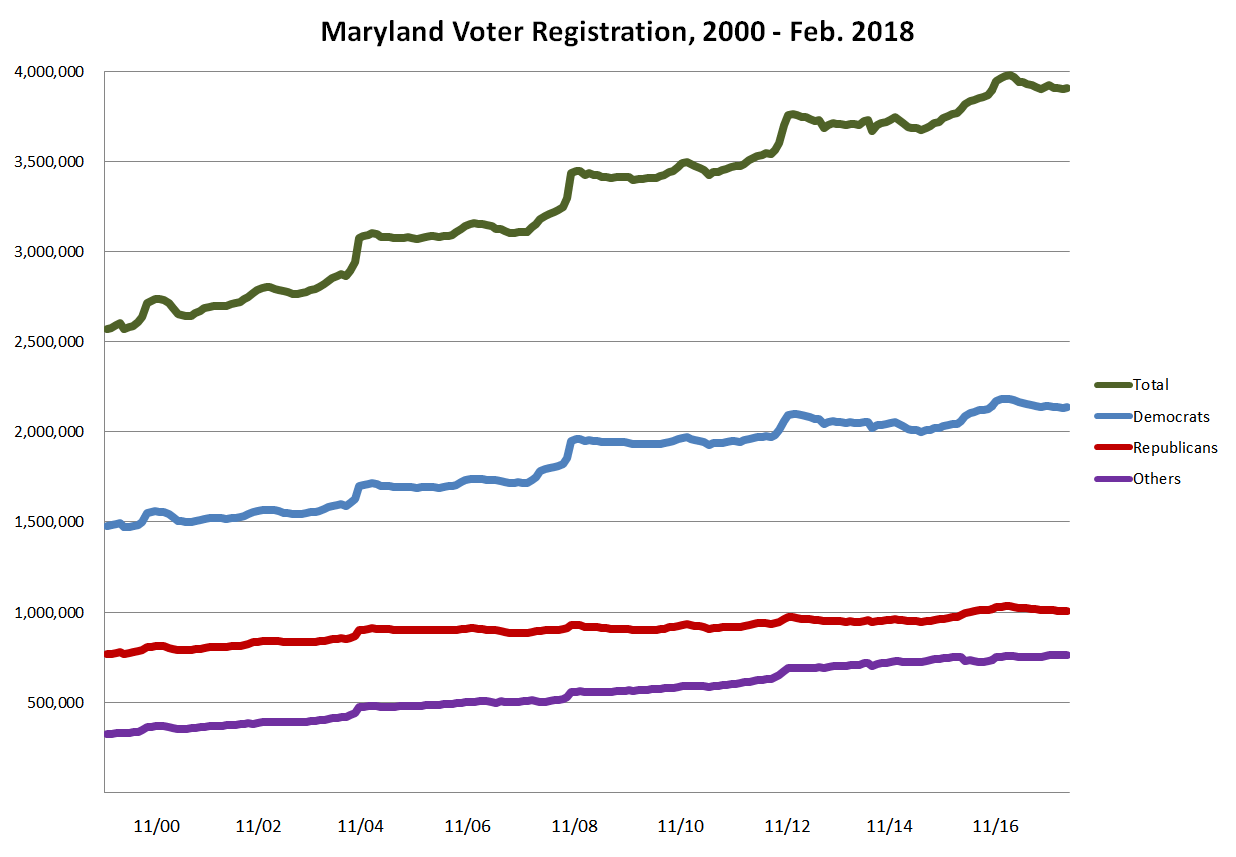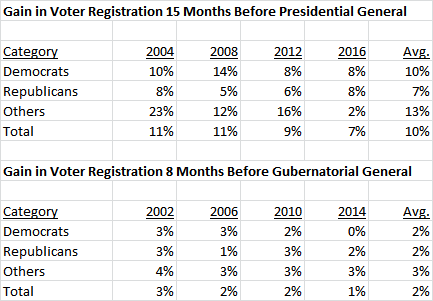By Adam Pagnucco.
Despite a wave of anti-Trump activism from the left, Democratic voter registration in Maryland has actually fallen since the President’s election in November 2016. Is that a problem?
To answer that question, let’s start with this fact: since November 2016, voter registration among Maryland Democrats has dropped from 2,179,948 to 2,134,776 in February 2018. That’s a decline of 2%. Over the same period, voter registration has dropped by 2% among Republicans, risen by 2% among independents and other party members and declined 1% overall.
The state’s voter registration numbers go back to 2000. Over that period, while registration has risen generally, it is tied to election cycles. After each general election, registration drops, but then begins rising prior to the next general election. The chart below shows that pattern clearly for all categories of voters.
Each election cycle has seen an inflection point, a month in which registration has stopped falling and started rising steadily through the next general election. Over the last four presidential cycles, the inflection point has occurred on average fifteen months before the general election. Over the last four gubernatorial cycles, the inflection point has occurred on average eight months before the general election. Here are the registration gains by category from average inflection point to general election in each of those cycles.
A few things stand out. First, registration gains are far higher in presidential cycles than in gubernatorial cycles. Second, the long-term trend in both kinds of cycles is decline in the rate of gain. Third, a sharp fall in registration gains among non-Democrats and non-Republicans in the 2016 cycle may reflect significant discontent with the two major party nominees. And fourth and most relevant, flat-lining Democratic registration may have been a portent of Anthony Brown’s loss in 2014.
What is happening now? Our latest data point is February 2018, fifteen months after the 2016 general election. We compared voter registration gains from the last presidential election to fifteen months later over the last five cycles to put the last fifteen months in perspective. Overall, it’s normal for registration to fall over that period of time. On average, registration is down 2% for Democrats and Republicans, up 2% for others and down 1% overall for those 15-month periods.
From November 2016 through February 2018, voter registration fell among Democrats and Republicans by 2%, rose among independents and other party members by 2%, and fell for all voters by 1%. These are the exact same rates as the average for the last five cycles.
This goes against the prevailing narrative that President Trump’s conduct in office is producing a revival of the Democratic Party. It’s true that Democrats have put together a string of special election wins around the country and many analysts are predicting that they might take over one or both chambers in Congress. It’s also true that changes in registration don’t always correspond to changes in actual voting. But in Maryland, at least on the measure of voter registration, Democrats have not appeared to capitalize on anti-Trumpism to bolster their ranks. Voter registration trends are behaving normally, not abnormally as one might expect in the age of resistance to Trump.
This is good news for Governor Larry Hogan. As for Maryland Democrats, perhaps questions should be asked.



